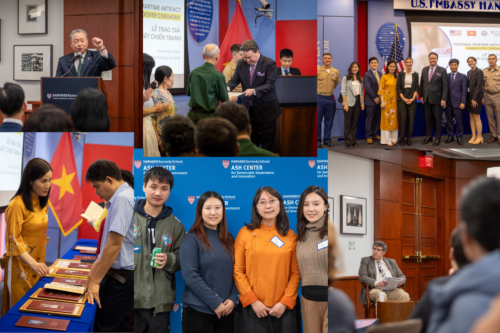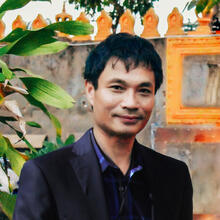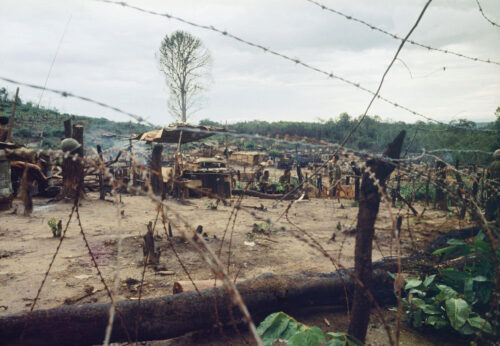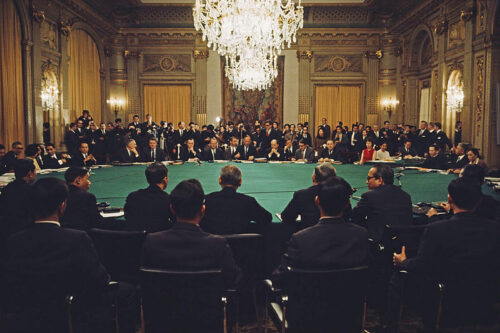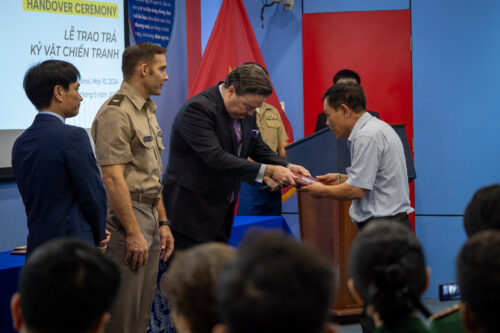“I used to believe the Paris Peace Accords would bring a happy ending to the Vietnam War,” said Nguyen Thao, a former clandestine agent of the National Liberation Front (NLF) and later a high-ranking government official, during our interview in Central Vietnam.
An orphan from the age of one when his Viet Minh father was shot by the French, Thao joined the revolution determined to fight for peace. He fantasized “The U.S. troop withdrawal and the idea of forming a democratic society in the South was doable.” However, Thao’s dream was crushed when the Accords instead amplified the ferocity of the conflict.
Nguyen Thao’s disappointment in the Paris Peace Accords—an agreement signed on January 27, 1973, by leaders from all four sides fighting the war in Vietnam—was long in the making. As an oral historian, I have listened to voices from all sides of the war, bringing their untold stories about the conflicts and their enduring legacies.
After the disaster of the Tet Offensive of 1968, Le Duan, first secretary of the Workers’ Party of Vietnam (WPV), finally agreed to begin negotiations with the U.S. that he had previously refused numerous times since 1965. United States President Lyndon B. Johnson proposed the withdrawal of American troops from the “Vietnam quagmire.” President Richard Nixon, his successor, undermined the negotiations but then was forced into the same terms.
The “fighting while talking, talking while fighting” strategy was also costly for the People’s Army of Vietnam (PAVN), particularly in the 81-day battle for Quang Tri in 1972. Characterized as a “meat grinder,” it took a heavy toll on both sides. In a later conversation with U.S. Secretary of State Henry Kissinger, Le Duc Tho, special advisor to the North’s delegation in Paris, argued that the battle’s goal was to pressure the Americans at the negotiation table.
North Vietnam was thrilled with the signing of the Accords since it fulfilled Le Duan’s scheme that “American troops must withdraw while our troops stay.” During our interview, Pham Huu, a PAVN political officer recollected his Northern Vietnamese soldiers’ reactions to the event fifty years later, “The U.S started retreating and we shot our AK guns to celebrate.”
In the wake of the U.S. departure, the accepted provisions were immediately violated. The multipartite wars in Indochina intensified as the PAVN became the “concertmaster” on the battlefields in South Vietnam, Laos, and Cambodia while the south’s Army of the Republic of Vietnam (ARVN) escalated its “leopard-spot” campaign of pacification and land encroachment. By 1973, the ARVN carried out 11,367 operations, of which 10,072 were battalion-sized or larger.
NLF and PAVN forces were allowed to return fire. Nguyen Van Khai, a farmer soldier from Thai Binh, recalled, “When the U.S. left our country, Vietnamese faced each other on the battlefields. We used loudspeakers to remind the enemies that we are all Vietnamese and share the same red blood and yellow skin. It would have been great if we shook hands instead of fighting. But we had to fight otherwise we get killed.”
Thao never used his AK to celebrate. He remembers how the war dragged on as the Accords were violated without any response from the U.S. The plan for establishing the National Councils of National Reconciliation and Concord in article 12 of the Accords was no more solid than clouds. Remembering his blind trust in national reconciliation, Thao recalled, “We never imagined the campaign coming to liberate the South.”
While Thao was still dreaming of Southern self-determination and democracy, the Northern leaders planned to sweep the South. A blueprint called “the way to liberation through revolutionary violence” was broached in the WVP’s Resolution No. 21. In 1973, North Vietnam sent 14,000 troops and 86,000 tons of military supplies into the South. This was the first time that such a large-scale synchronous force had included infantry, ground artillery, anti-aircraft batteries, tanks, and armored vehicles.
The ongoing war was a formidable effort for both sides. Both knew that their allies had stopped arming them but insisted the fighting continue. Compared to the previous year, China and the Soviet Union slashed aid by 60% in 1973, while support was also cut by the U.S. Colonel Bui Huu Thu, a Catholic ARVN naval officer, remembered, “When I showed up at the Pentagon in January 1973, a Navy admiral said to me, ‘You take care of your wife and children. We won’t supply oil or ammunition, so you can’t fight them.’ I understood our South Vietnam was dead when I heard that.”
Abandonment by the big powers did not push North Vietnam and South Vietnam to pursue peace as agreed in the Accord. From 1973 to 1975, South Vietnam was drenched in blood. Vu Thu, a northern mountain fighter who was part of the tank convoy that entered Saigon on April 30, 1975, acknowledged the brutality of the battles he fought in: “Honestly, I only came to realize the atrocity of wars after seeing the huge loss of lives suffered by both sides. It became apparent to me that in wars, dignity and human lives were dirt cheap.”
In the hidden memories of local fighters, strife after 1973 was more catastrophic than what they had endured already. The wars in Indochina are seen as “meat boiling in a leather pot” [nồi da xáo thịt]. Derived from folklore, this term describes the heat of anger and the self-destruction within both the individual and the society as they turned to civil war and fratricide.
Worse, the civil wars in Laos and Cambodia escalated and lasted well after 1975. This led to massive starvation in Northwest Cambodia as well as a massacre of two million civilians by the Khmer Rouge, which led to the Third Indochina War. Likewise, the civil war in Laos did not end with the Accords. Lieutenant Nao Shua Xiong, a soldier of the Special Guerrilla Unit of the Royal Lao Army, said, “My father died, and many of my buddies died in the war before and after 1975. My wife and I fled to the highlands to organize the fight against the Pathet Lao. In 1978, I fled to Thailand. Countless Hmong died in the Mekong River because they could not swim. What a tragic fate!”
Loss and trauma on all sides, including the U.S. and their allies, have not ended yet. All are pieces of the deep legacies in the continuing human tragedy.
The violent end of the wars killed innumerable Vietnamese and other communities. Hundreds of thousands drowned in the sea, and millions were dispersed in a global diaspora that continues to resonate. The Accords left a profound question: When foreign powers withdrew, why did compatriots still fight to the death? There can never be real national healing and reconciliation until this question is answered.
For American soldiers, the Accords brought them back home but, but left little in the way of peaceful memories. Fifty years after, James Coolican, a former advisor for ARVN Fast-Reaction forces in the Tet Offensive in Hue, told me, “We had 58,000 American military killed. Hundreds of thousands of North and South Vietnamese also died, wounded, and injured. Why did we do that, and how can we justify that?”
The old revolutionary cadre Nguyen Thao’s father fought for peace and was killed in the war against the French. Then, peace did not come after Dien Bien Phu or the Geneva Agreement which allowed the French to withdraw in 1954. The global Vietnam Wars were left to be fought by other powerful countries and their local allies. In his father’s footsteps, Thao picked up the gun to continue fighting for peace. Yet, there was still “no victorious peace.”
Half a century has passed since the agreement in Paris, and Thao concludes bitterly, “Armistice agreements in world history such as Geneva and Paris are historical tragedies for smaller countries. Both sides failed, and the war continued. The powerful countries benefited and did not care about the consequences because their goal was achieved. The small countries were left to suffer.”
Some names and identifying details have been changed to protect the identity of individuals.
